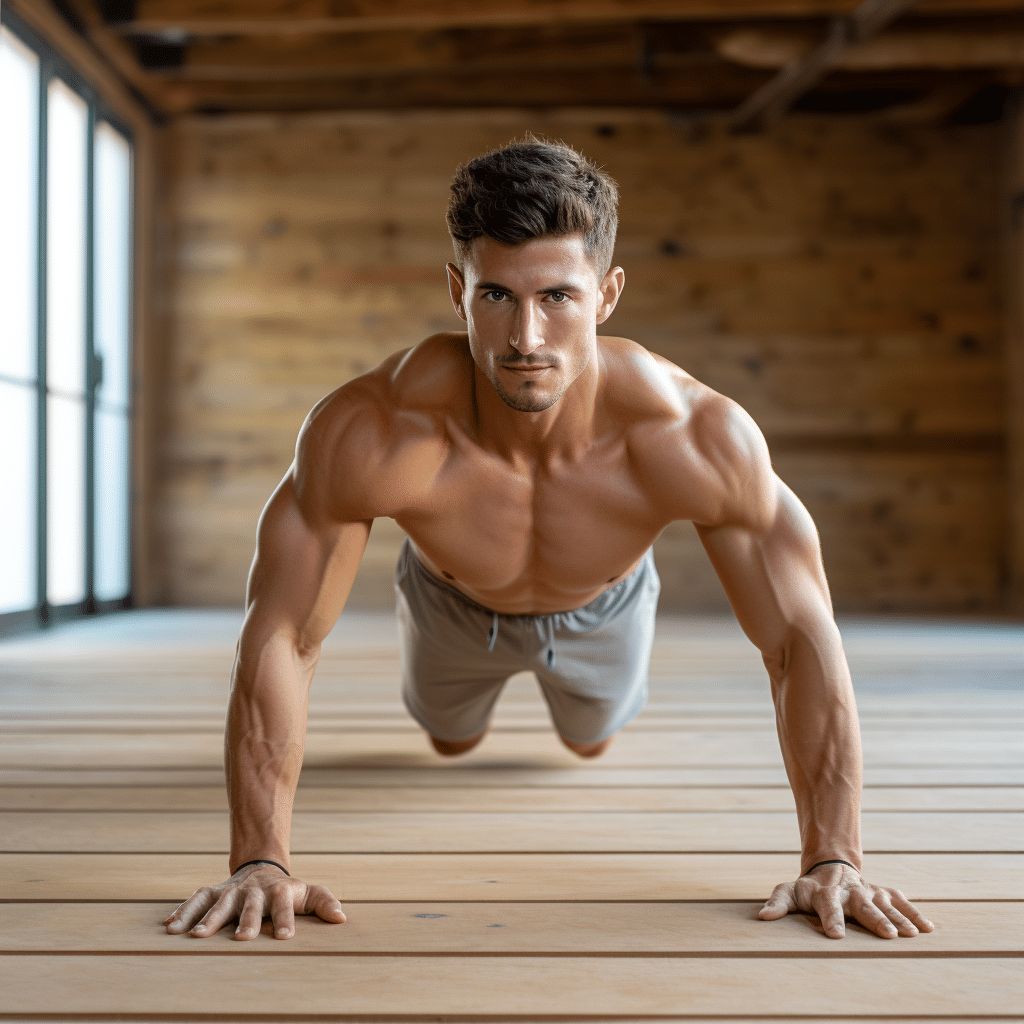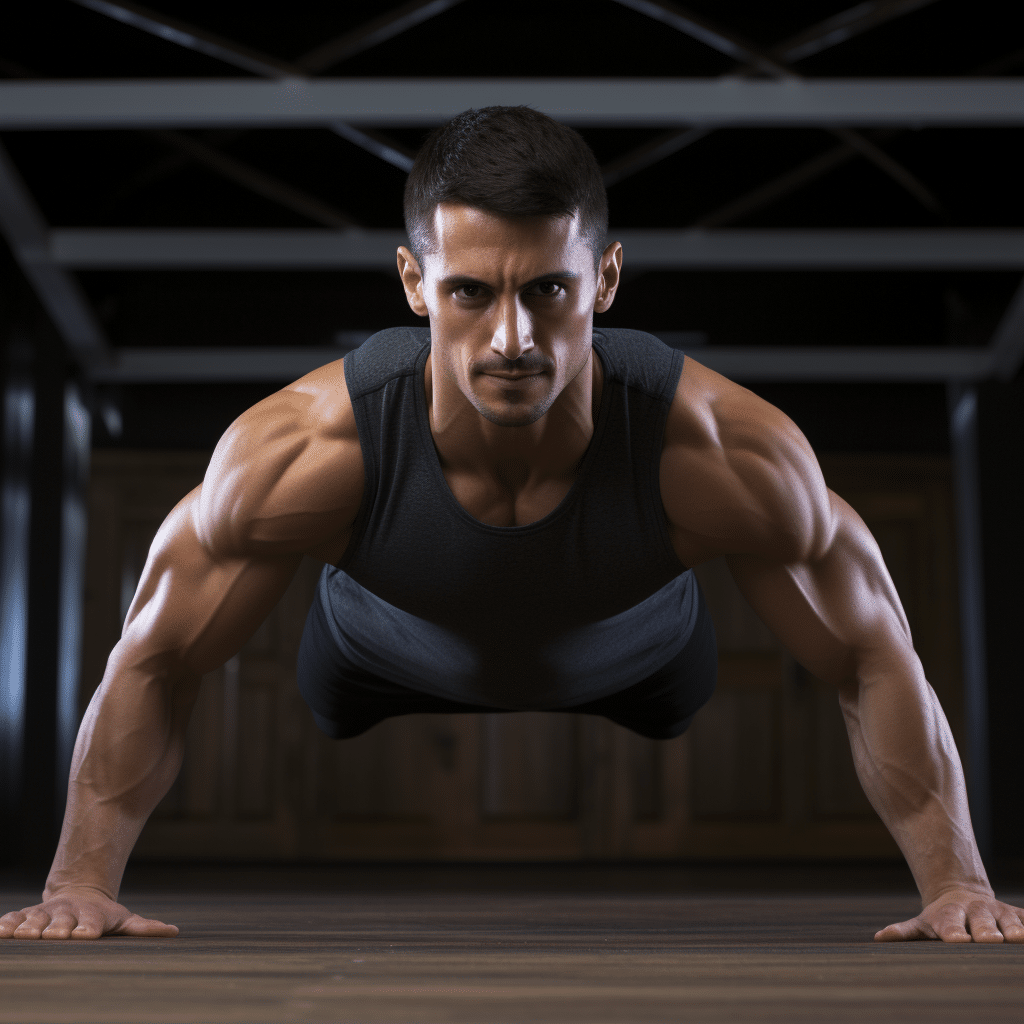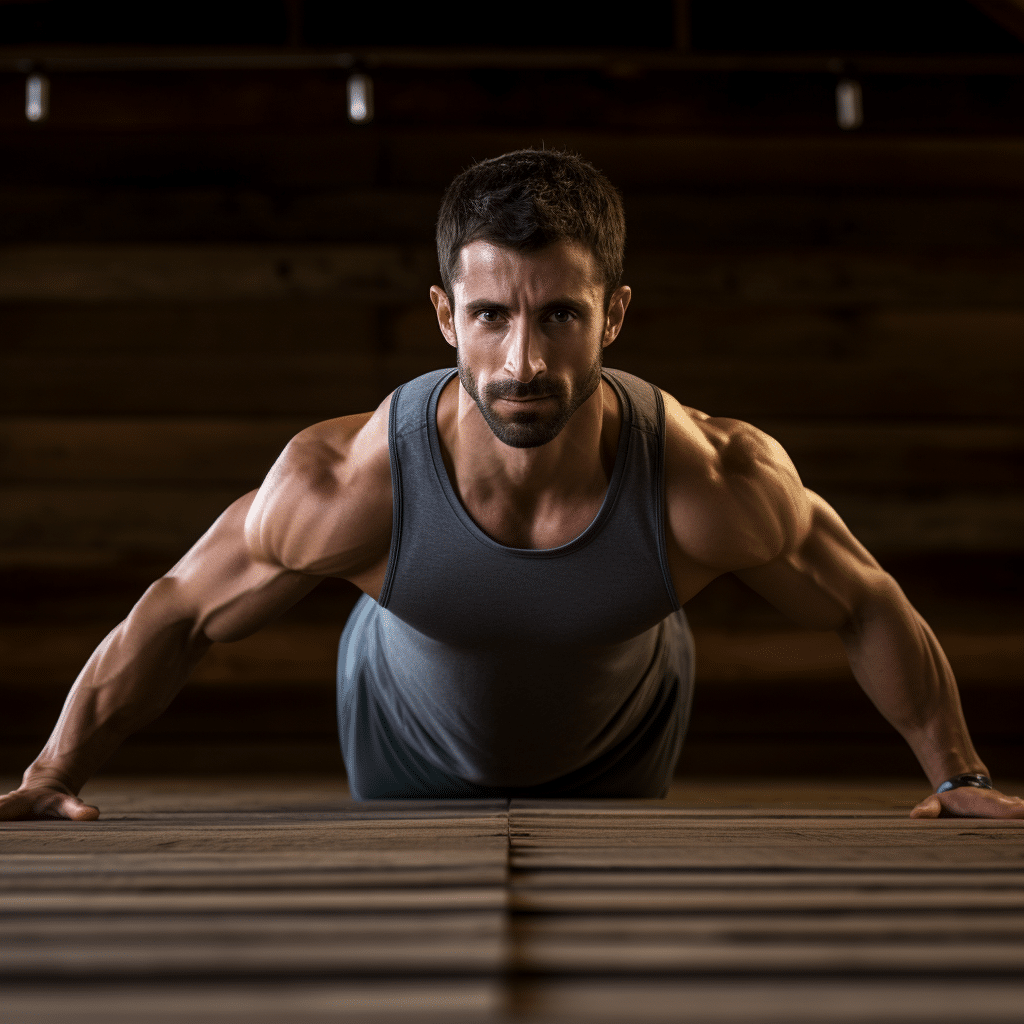Introduction
Planks are a popular exercise for core strength. They involve holding your body straight from head to heels. Planks are effective for sculpting a strong midsection. However, it’s not clear if planks work the obliques. The obliques are important muscles that run along the sides of the abdomen. They help with rotational movements and maintaining spine stability.
As such, they are a pivotal component of a well-rounded core workout .Planks focus on the front and deep core muscles, but also work the obliques. Obliques help stabilize your body during planks, especially side and forearm planks. Side planks are great for obliques as they challenge lateral muscles by supporting your body weight on one arm or forearm.
Standard planks also activate the obliques, especially when you engage your core fully and maintain proper form. However, that planks are not the sole solution for developing well-defined obliques. To achieve a comprehensive oblique workout, incorporating a variety of exercises specifically targeting these muscles is advisable. Exercises like Russian twists, bicycle crunches, woodchoppers, and oblique crunches can be added to your routine for a more well-rounded approach. In the relationship between planks and oblique muscles. We will explore how planks engage the obliques, the benefits of incorporating planks into your core routine, and the of combining them with other oblique-focused exercises for a complete core strengthening regimen.
What is the best plank for obliques?
“The starting point for all oblique exercises should be the side plank,” says Atkins. “And if you can’t hold a side plank on your feet, shorten the lever and take it to your knees. Why is this important? Our cores should limit the amount of motion we allow for the torso to bend sideways.”
The side plank is perhaps the most effective plank variation for oblique engagement. It directly targets the lateral muscles on the sides of your abdomen. To perform a side plank, lie on your side with your legs extended and prop yourself up on your forearm or hand. Ensure your body forms a straight line from head to heels. Engage your obliques to maintain stability. For an added challenge, lift your top leg or add a side leg lift.
This variation combines the benefits of a standard plank with an oblique-twisting motion. Begin in a forearm plank position, then thread one arm under your body and reach it out on the opposite side. This motion engages the obliques as you twist your torso. Alternate sides for a balanced workout.
Plank hip dips are another effective way to target the obliques. Start in a forearm plank position and, while keeping your core engaged, lower your hips to one side and then the other. These controlled movements create a dynamic challenge for your oblique muscles.
Do side planks work your obliques?
The side plank is going to teach you how to brace your core in order to build your obliques and give you a crash course in lateral stability, which you’ll need in both sports and life in more settings than you might expect.
Side planks specifically isolate and target the oblique muscles. To perform a side plank, you lie on your side, supporting your upper body with your elbow or hand and lifting your hips off the ground. This lateral positioning places a significant demand on the obliques to maintain stability and prevent your body from collapsing. As a result, the oblique muscles are activated and engaged throughout the exercise.
Holding a side plank position requires endurance and strength in the obliques. This exercise challenges the muscles isometrically, meaning they contract to maintain a static position without significant movement. Over time, consistently practicing side planks will help build both endurance and strength in the oblique muscles.
Side planks can be modified to add variation and increased difficulty, allowing you to tailor your workout to your fitness level and goals. You can perform side planks with extended arms, staggered feet, or by lifting the top leg to intensify the oblique engagement. The versatility of side planks makes them suitable for individuals at different fitness levels.
Which muscles do planks work?
The core muscles targeted when doing a plank exercise are the rectus abdominus (front abs), oblique muscles (side abs), transverse abdominis (runs from the belly button up to the rib cage) and the glutes. Training your core regularly will keep the spine aligned and maintain a strong, healthy back.
Rectus Abdominis: The rectus abdominis, often referred to as the “six-pack” muscles, run vertically down the front of your abdomen. Planks engage these muscles as you stabilize your core to prevent your lower back from sagging.
Transverse Abdominis: The transverse abdominis is a deep, inner layer of abdominal muscles that wraps around your spine like a corset. Planks are excellent for strengthening these muscles, which are crucial for overall core stability and spinal support.
Obliques: Planks engage the oblique muscles, both the external and internal obliques, which are located on the sides of your abdomen. The obliques help you maintain proper posture and prevent your body from rotating while in the plank position.
Erector Spinae: These muscles run along your spine and play a significant role in maintaining an upright posture. During a plank, the erector spinae muscles work to keep your spine aligned and stable.
Do side planks make obliques bigger?
Your obliques will become bigger or more toned depending on the way you train it. In terms of side planking, this will actually increase your muscle endurance and make you more cut, giving you the hourglass body shape that most people go for. Definitely incorporate side planks in your exercise regime.
Strengthening vs. Hypertrophy: Side planks primarily focus on strengthening the oblique muscles. These muscles play a vital role in core stability, posture, and functional movement. When you perform side planks, you’re essentially engaging the obliques in an isometric contraction, which means they work to hold a static position. While this increases their endurance and strength, the hypertrophy potential (muscle growth) is somewhat limited when compared to exercises that involve more dynamic movements and resistance.
Aesthetic Impact: To make your obliques visibly bigger and more defined, you would typically need to incorporate exercises that involve resistance and progressive overload. This means using weights, resistance bands, or other tools to challenge the muscles by adding more resistance over time. Isolation exercises like oblique twists, cable woodchoppers, or weighted side bends are more effective for increasing the size of the oblique muscles and achieving the desired aesthetic results.
Balanced Core Development: While side planks may not lead to significant oblique hypertrophy, they are valuable for achieving a balanced and strong core. Incorporating side planks into your core workout routine helps enhance the functional strength and stability of your obliques, which is for overall fitness and injury prevention.
What exercise hits the obliques?
That means moves like side planks and windmills will challenge your oblique muscles, as will any exercises that have you holding a load off-center while still trying to keep your hips and shoulders square.
Sit on the floor with your knees bent and your feet flat. Lean back slightly while maintaining a straight spine. Hold a weight or medicine ball with both hands and twist your torso to the right, bringing the weight to the outside of your right hip. Return to the center and repeat on the left side. This twisting motion engages the obliques and is excellent for building strength and definition.
Lie on your back with your hands behind your head, knees lifted, and feet off the ground. Bring your right elbow and left knee toward each other while simultaneously extending your right leg. Alternate sides in a pedaling motion. This exercise combines twisting and crunching movements that effectively target the obliques.
Using a cable machine or resistance band, attach the handle to the high setting. Stand with your feet shoulder-width apart and the handle in both hands. Starting from above your shoulder, pull the handle down diagonally across your body, pivoting your feet and twisting your torso as you go. The movement mimics chopping wood and engages the obliques.

Do side planks help to get a smaller waist?
Strengthening this area of the abdominal wall actually decreases the risk of back pain and makes for a stronger, more stable core. From an aesthetic perspective, side planks will tone your obliques, “whittling” your waist and helping you lose inches, if that is your goal.
Muscle Toning: Side planks target the oblique muscles, which run along the sides of your abdomen. Consistent practice of side planks can lead to increased muscle tone in the obliques, which may enhance the appearance of a smaller waist by adding definition and firmness. However, muscle toning alone may not significantly reduce the size of your waist.
Fat Reduction: To achieve a smaller waist, a combination of muscle toning and fat reduction is crucial. While side planks can help tone your obliques, reducing overall body fat is necessary to reveal the muscle definition you’ve built. Incorporating cardiovascular exercise, such as running, cycling, or swimming, alongside a healthy, balanced diet, can help you shed excess body fat.
Spot Reduction Myth: It’s spot reduction, which is the idea of losing fat from a specific area of your body through targeted exercises, is a fitness myth. You cannot selectively lose fat from your waist just by doing side planks or any other single exercise. When you lose fat, your body naturally sheds it from various areas, including the waist.
What happens if I do side planks everyday?
Side planks work the deep spinal stabilizing muscle quadratus lumborum . Keeping this muscle strong can help reduce your risk of a back injury. Strengthens your core without stressing your back. Unlike crunches and situps, side planks don’t put pressure on your lower back.
Improved Core Strength: Side planks are an effective exercise for strengthening the obliques, transverse abdominis, and other core muscles. Consistently doing them can lead to increased core strength, which helps with overall stability and posture.
Better Balance: Side planks also engage the muscles responsible for lateral stability. Over time, this can enhance your balance, making it easier to maintain proper posture during various activities.
Injury Prevention: A strong core, including well-developed oblique muscles, can reduce the risk of back injuries and improve spinal support. Daily side planks can contribute to injury prevention.
Muscle Endurance: Regular practice can improve muscle endurance in the obliques and surrounding core muscles. This increased endurance can benefit various physical activities and workouts.
Are big obliques attractive?
Obliques
Obliques are the fish gills like muscles at the sides of your abs that make you look extra shredded. Women rated obliques as the fourth sexiest muscle on a man, and this should be reason enough to start training them.
Aesthetics and Cultural Influences: Beauty standards are influenced by culture, media, and fashion trends. Is considered attractive can change over time and across different regions and communities. Some people find well-defined, strong obliques attractive, while others may prefer a leaner, less muscular look.
Personal Preferences: Personal preferences are a crucial factor in determining what someone finds attractive. Some individuals may be drawn to a more athletic and muscular physique, appreciating the effort and dedication required to develop big obliques and a strong core. Others may prefer a softer or leaner appearance.
Individual Confidence: Confidence and self-assuredness often contribute significantly to attractiveness. A person who feels confident in their body and proud of their physique, including their obliques, is likely to be perceived as attractive to others. Confidence can be attractive regardless of specific physical features.

Conclusion
In planks work the obliques has a nuanced answer. Planks are undeniably a fantastic exercise for overall core strength and stability, and they do engage the oblique muscles to some extent. When executed with proper form, planks can help you develop a strong, supportive core that includes the obliques. However, they may not be the most efficient or targeted exercise for sculpting well-defined obliques. The engagement of the obliques during planks is more prominent in exercises like side planks, where the lateral muscles are required to work hard to maintain stability.
Yet, for individuals aiming to specifically isolate and enhance the appearance of their obliques, incorporating a variety of oblique-focused exercises into their routine is essential. To achieve a comprehensive oblique workout, exercises such as Russian twists, bicycle crunches, woodchoppers, and oblique crunches should be integrated. These exercises place a greater emphasis on the oblique muscles, promoting their growth and definition. Planks offer numerous benefits beyond their role in oblique engagement. They improve overall core strength, which is vital for posture, spinal health, and functional fitness.
The ability to maintain a neutral spine during various activities is crucial for preventing injuries and enhancing athletic performance. Planks also contribute to improved balance, stability, and the prevention of lower back pain. Incorporating planks into your fitness routine is a wise choice for holistic core development. However, they should be part of a more extensive repertoire of exercises that specifically target the obliques. A well-rounded approach to core training will yield the best results, not only in terms of aesthetics but also in functional strength.

